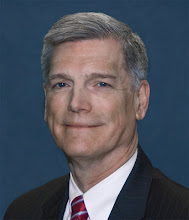 In a November 7 posting, the Wall Street Journal's Environmental Capital blog provides an excellent summary of the various "messages" observers believe voters sent about their desires on energy policy during this election. While some clean energy advocates believe the voters expressed a clear mandate for clean energy, exits polls suggest that the voters' message may be more nuanced (i.e., mixed) than advocates would like. It seems the voters were far more interested in the candidates' economic proposals than their energy proposals, according to exit polls cited in the posting. While both candidates promised action on climate change, the public's concerns about economic security appear to trump concerns about longer term challenges, such as climate change, making voters less eager to bear the costs that will fall on the public when government-mandated carbon controls are implemented.
In a November 7 posting, the Wall Street Journal's Environmental Capital blog provides an excellent summary of the various "messages" observers believe voters sent about their desires on energy policy during this election. While some clean energy advocates believe the voters expressed a clear mandate for clean energy, exits polls suggest that the voters' message may be more nuanced (i.e., mixed) than advocates would like. It seems the voters were far more interested in the candidates' economic proposals than their energy proposals, according to exit polls cited in the posting. While both candidates promised action on climate change, the public's concerns about economic security appear to trump concerns about longer term challenges, such as climate change, making voters less eager to bear the costs that will fall on the public when government-mandated carbon controls are implemented.Whether "election haruspicy" interests you or not, the Environmental Capital blog posting will give you some insights on the signals bouncing around the political atmosphere this week as the incoming administration begins to think about priorities and possibilities in energy policy.
Image: The Liver of Piacenza, a bronze model of a sheep's liver inscribed with the names of Etruscan deities, and believed to have been used by Etruscan priests in the practice of haruspicy.

Comments